#Promachocrinus fragarius
Explore tagged Tumblr posts
Text
I'm going crazy.




65 notes
·
View notes
Text


photos of the newly discovered Promachocrinus fragarius, or Antarctic strawberry feather star, which has 20 arms
653 notes
·
View notes
Text

I love this weird new fucked up fish thing!
3 notes
·
View notes
Text


#antarctica#antarctica strawberry feather star#feather star#echinoderm#echinoderms#echinodermata#crinoidea#comatulida#comatulids#antedonidae#animal polls#poll blog#my polls#animals#polls#tumblr polls#invertebrate#invertebrates#marine invertebrates#marine life
22 notes
·
View notes
Text
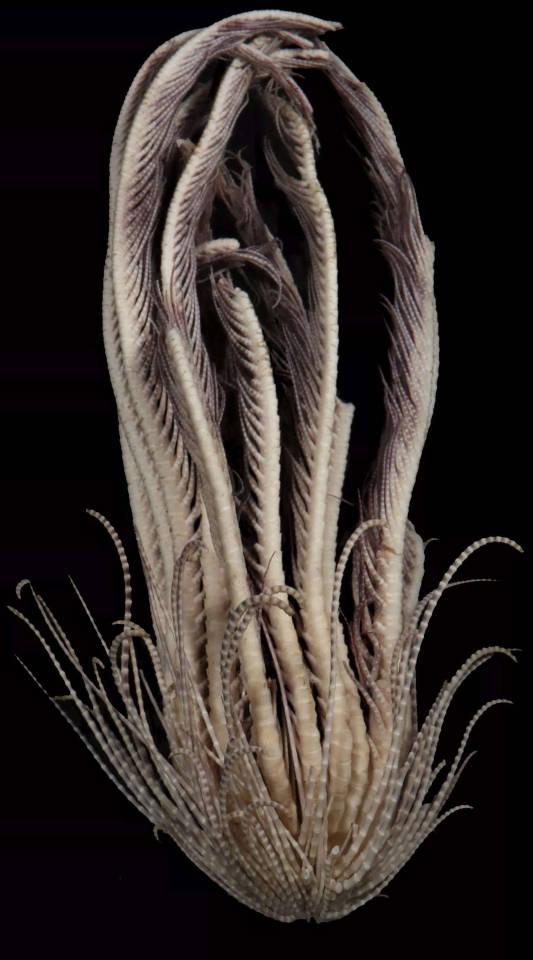
Antarctic strawberry feather star (Promachocrinus fragarius), Alien-Like Antarctic Feather Star With 20 Legs Joins Four New-To-Science Species
#marine biology#marine#marine life#sea#deep sea#Antarctica#Antarctic strawberry feather star#biology#nature
159 notes
·
View notes
Text
Terrifying Alien-like creature with 20 Arms has been discovered in the Antarctic Ocean. Meet the Antarctic Strawberry Feather Star, a new species with 20 arms and a fruity shape. This large creature lives in the deep and cold waters of the Southern Ocean. It can be purplish or dark reddish in color.
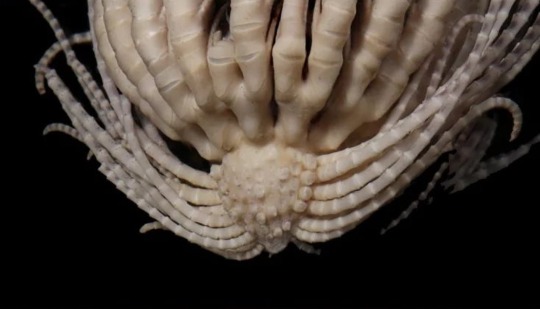
The Antarctic Strawberry Feather Star is a new species of marine animal that belongs to the genus Promachocrinus, a group of invertebrates related to starfish and sea cucumbers. It was discovered by scientists from the Scripps Institution of Oceanography and the University of California, San Diego, who conducted several expeditions to the Southern Ocean between 2008 and 2017.
The Antarctic Strawberry Feather Star has a unique shape and appearance that resembles a strawberry with 20 arms. Its central body, or calyx, is round and flattened, with a diameter of about 10 cm. Its arms are long and slender, reaching up to 30 cm in length. The arms are covered with small projections called pinnules, which help the animal filter food from the water. The color of the animal can vary from purplish to dark reddish, depending on the depth and light conditions.
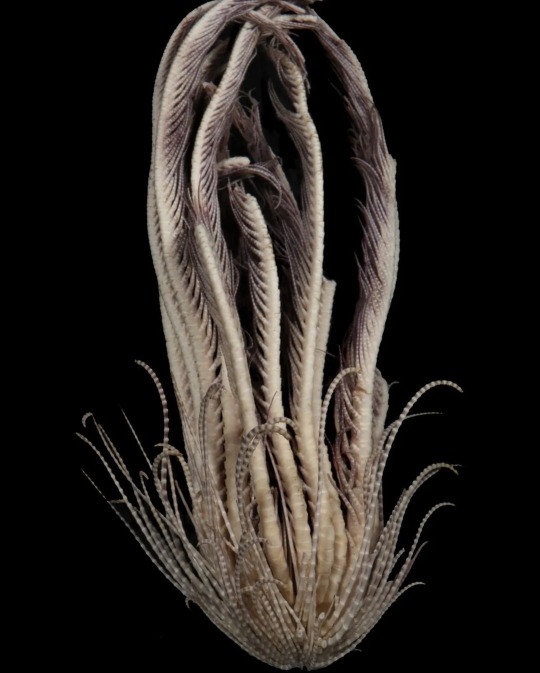
The Antarctic Strawberry Feather Star lives in the deep and cold waters of the Southern Ocean, at depths ranging from 65 to 6500 feet. It is usually found attached to rocks or other hard substrates by a stalk-like structure called a cirrus. The animal can also detach itself and swim by waving its arms. It feeds on plankton and other small organisms that it captures with its pinnules.
The Antarctic Strawberry Feather Star is one of four new species of Promachocrinus that were identified by the scientists, along with seven other known species. The researchers used DNA analysis and morphological examination to distinguish the different species. They also named the new species after their distinctive features or locations. For example, Promachocrinus fragarius means “strawberry-bearing” in Latin, while Promachocrinus rossi is named after explorer Sir James Clark Ross, who led the first expedition to Antarctica in 1839.
The discovery of the Antarctic Strawberry Feather Star and its relatives is an example of the rich and diverse biodiversity that exists in the Southern Ocean. The scientists hope that their research will help increase our knowledge and appreciation of this unique and fragile ecosystem. 🙏
37 notes
·
View notes
Text
‘Large’ creature — with 20 arms — found lurking in Antarctic sea. It’s a new species
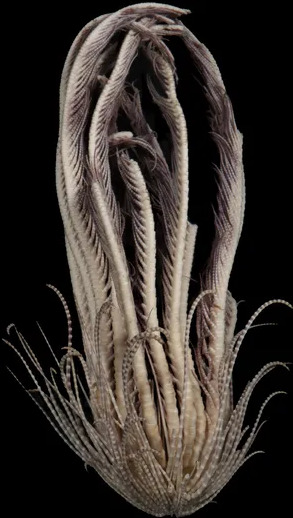
Scientists aboard a research vessel near Antarctica pulled their nets out of the chilly ocean water. Among their catch, they found a 20-armed creature with a distinctive body shape. It’s a new species.
Researchers trawled the Southern Ocean on several research expeditions between 2008 and 2017, according to a study published July 14 in the journal Invertebrate Systematics. They were searching for a group of “cryptic” sea animals known as Promachocrinus, or Antarctic feather stars.
Antarctic feather stars are “large” animals that can live anywhere from about 65 feet to about 6,500 feet underwater and have an “otherworldly appearance” when swimming, researchers said. Although both are invertebrate ocean animals, feather stars are distinct from more well-known sea stars
During their surveys, researchers collected eight feather stars with a distinctive body shape and discovered a new species: Promachocrinus fragarius, or the Antarctic strawberry feather star.
The Antarctic strawberry feather star has 20 arms branching off its central “strawberry-like” body, the study said. It can range in color from “purplish” to “dark reddish.” Researchers did not provide measurements of the animal’s overall size.
Photos show the new species has two types ofappendages. Its lower, shorter arms appear almost striped and bumpy, while its upper, longer arms appear almost feathered and soft
A close-up photo shows the Antarctic strawberry feather star’s lower body. It has a roughly triangular shape, wider at the top and tapering toward a rounded bottom tip. The texture appears bumpy with circle-like indents likely left from broken-off arms.
Researchers named the new species after the Latin word for “strawberry” because of the “resemblance of the (body) shape… to a strawberry.”
31 notes
·
View notes
Text

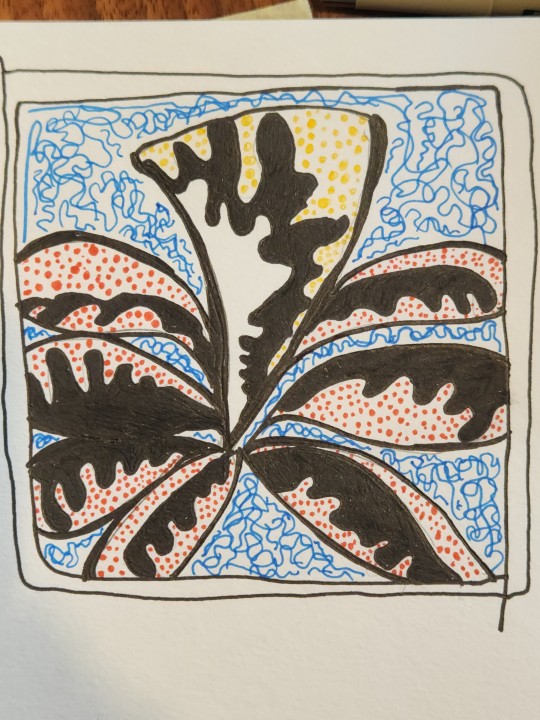
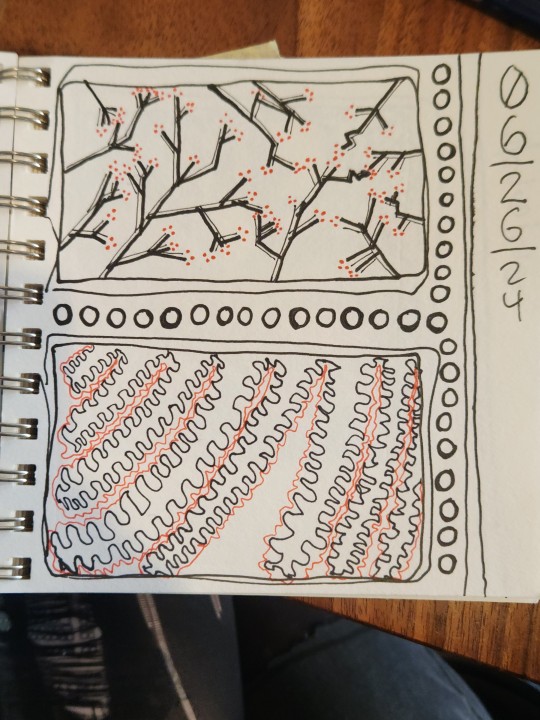


haven't been drawing too much lately need to get into the habit while I'm unemployed lol. I have some really cool collabs with some very talented artists coming up and so I've made some practice album covers and collage resources for those this last week.
also got really autistic about the Antarctic strawberry feather star (Promachocrinus fragarius) and finally drew a proper crinoid fursona.. she doesn't have a name but she is silly, autistic and stims alot.
4 notes
·
View notes
Text

Scientists trawling from a research vessel off the coast of Antarctica have caught a new undersea creature — one with 20 arms which they have named the Antarctic strawberry feather star or Promachocrinus fragarius. The entire group known as Promachocrinus, or Antarctic feather stars, can live anywhere from 65 feet to about 6,500 feet beneath the ocean's surface, where the researchers with Scripps found eight unique species on their mission, including four never before named by scientists.
from https://www.dailymail.co.uk/sciencetech/article-12398727/New-species-sea-monster-20-arms-lurking-frozen-seas-Antarctica.html
5 notes
·
View notes
Text
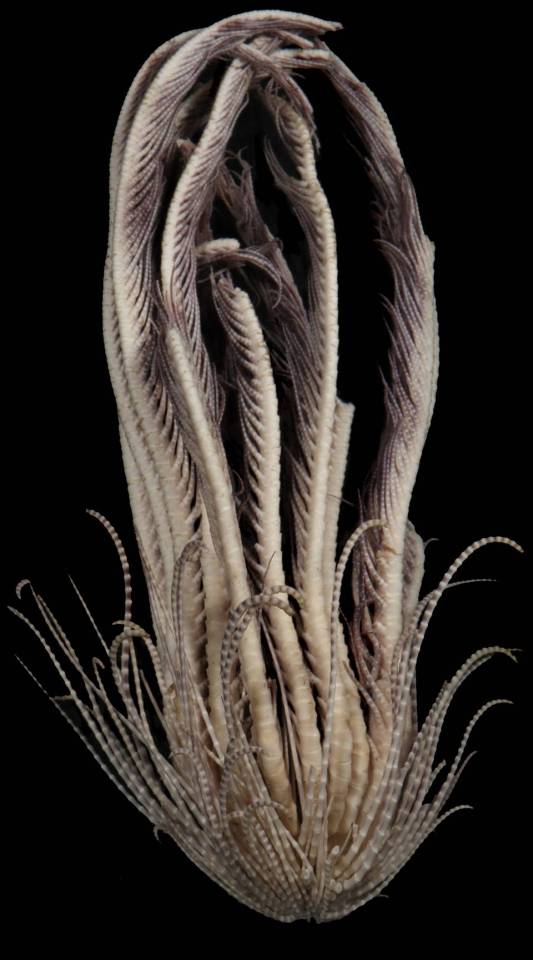

The Antarctice strawberry feather star (Promachocrinus fragarius)
hey don't cry, ‘large’ creature with 20 arms found lurking in Antarctic sea, okay??
39K notes
·
View notes
Text
0 notes
Link
Antarktika Derinliklerinde Keşfedilen Yeni Deniz Canlısı: Promachocrinus fragarius
Antarktika’da araştırmacılar, 20 kola ve “çilek benzeri” şekle sahip yeni bir deniz canlısı türü keşfetti. Bu canlı, deniz zambağı olarak bilinen bir hayvan grubuna ait ve “Promachocrinus fragarius” olarak adlandırılıyor. Bu isim, Latincede “çilek” anlamına gelen “fragaria” kelimesinden geliyor. Bu canlının özellikleri, “Invertebrate Systematics” dergisinde yayımlanan bir makalede1 tanıtıldı.
Promachocrinus fragarius, Antarktika açıklarında bulunan bir tür ve yaklaşık 20 kolu var. Bu kollar, canlının ana gövdesinden çıkıyor ve çileğe benzeyen bir görünüm veriyor. Canlının rengi ise mor ile koyu kırmızı arasında değişkenlik gösteriyor. Bu yeni keşfedilen deniz canlısının, iki farklı yapıya sahip kolu olduğu belirtiliyor. Altta bulunan kollar “kaba ve çizgili” olarak tanımlanırken, üstteki kollar daha “tüylü” bir yapıya sahip.
Promachocrinus fragarius, deniz tabanının 19 ila 1981 metre arasındaki derinliklerinde yaşıyor. Boyutları oldukça büyük olan bu canlı, 65 ila 6500 feet (yaklaşık 19 ila 1981 metre) arasında değişen okyanus derinliklerinde yaşadığı ifade ediliyor. Bu canlının beslenme şekli ise henüz bilinmiyor. Araştırmacılar, bu canlının diğer deniz zambakları gibi su akımından gelen besinleri yakalayarak veya diğer küçük hayvanları yiyerek beslenebileceğini düşünüyor.
Bu canlının keşfi, Antarktika’nın biyolojik çeşitliliği hakkında daha fazla bilgi edinmemizi sağlıyor. Antarktika’nın suları, dünyanın en soğuk ve en izole bölgelerinden biri olmasına rağmen, çok sayıda hayvan türüne ev sahipliği yapıyor. Bu hayvanlar arasında penguenler, foklar, balinalar, ahtapotlar, yengeçler ve mercanlar gibi çeşitli gruplar bulunuyor. Promachocrinus fragarius da bu zengin ekosistemin bir parçası olarak karşımıza çıkıyor.
NHY/ BirGün
0 notes
Text
El nombre de la nueva especie es Promachocrinus fragarius y pertenece al grupo de estrellas de mar. Vive entre los 60 y los 3.840 metros de profundidad. Fue hallada en la Antártida. La estrella de pluma antártica Promachocrinus fragarius es una criatura marina con 20 "brazos" que pueden medir hasta ocho pulgadas de largo (Greg W. Rouse) La aparición de nuevas especies está rodeada de imprevistos, imponderables y sorpresas no calculadas que hacen revisar lo conocido. Algo de esto han experimentado los investigadores al rastrear el océano cerca de la Antártida y descubrir una nueva especie que parece inquietante en las fotos, y que recibió el nombre de una fruta. “La estrella de pluma antártica es una criatura marina con ´20 brazos´, algunos irregulares, otros plumosos, y en total pueden medir hasta 20 centímetros de largo”, según informó Greg Rouse, profesor de biología marina Instituto Scripps de Oceanografía en la Universidad de California en Estados Unidos, quien es coautor del artículo sobre el hallazgo junto a Emily McLaughlin y Nerid Wilson. Los especialistas publicaron su investigación en Invertebrate Systematics. “Si te acercas a su cuerpo, una pequeña protuberancia en el vértice de todos esos brazos, se asemeja al tamaño y la forma de una fresa o frutilla”, explicó Rouse. Las protuberancias circulares en el cuerpo de la estrella están donde deberían estar los cirros, las cuerdas más pequeñas con forma de tentáculo que sobresalen de la base, “pero se quitaron para mostrar los puntos de unión -dijo Rouse-. Hemos quitado un montón de cirros para que puedan ver las partes a las que están unidos, y eso es lo que parece una frutilla”. Agregó que los cirros tienen “pequeñas garras en el extremo que se usan para sujetarse al fondo del lecho marino”. Los llamados brazos son las partes más largas y parecidas a plumas de la estrella de pluma de frutilla antártica. “Por lo general, están dispersos -explicó Rouse-, y ayudan con la movilidad de la criatura”. El nombre formal de la nueva especie es Promachocrinus fragarius. Pertenece a la clase Crinoidea, que incluye estrellas de mar, erizos, dólares de arena y pepinos de mar, y es un tipo de estrella de pluma, de ahí el nombre menos formal de “estrella de pluma antártica”. Fragarius deriva de la palabra latina “fragum”, que significa fresa. “Originalmente solo había una especie en el grupo de estrellas de plumas antárticas: Promachocrinus kerguelensis”, indicó Rouse. Pero al arrastrar una red a lo largo del Océano Antártico en busca de más muestras de estas criaturas, el equipo de científicos de Australia y EEUU identificó cuatro nuevas especies que pueden pertenecer al grupo de estrellas de plumas antárticas. El nombre de la nueva especie es Promachocrinus fragarius y pertenece a la clase Crinoidea, que incluye estrellas de mar, erizos de mar, dólares de arena y pepinos de mar, y es un tipo de estrella de pluma (Imagen ilustrativa Infobae) La estrella pluma de fresa antártica destaca en particular por la cantidad de “brazos” que posee. “La mayoría de ellas tienen 10 brazos -destacó Rouse-. La posición típica de una estrella de plumas es tener los “brazos” extendidos y hacia arriba, mientras que los cirros apuntan hacia abajo. Con este descubrimiento, los investigadores podrían agregar ocho especies bajo la categoría de estrellas de plumas antárticas, agregando los cuatro nuevos y “resucitando” animales previamente descubiertos que inicialmente se creía que eran de su propia especie. “Así que pasamos de una especie con 20 brazos a ahora ocho especies: seis con 20 brazos y dos con 10 bajo el nombre Promachocrinus”, indicó Rouse. Según la investigación, la estrella de pluma de frutilla antártica se encontró en algún lugar entre 65 y aproximadamente 1170 metros debajo de la superficie. Los investigadores reconocieron en su artículo la “apariencia de otro mundo de los movimientos de natación de las estrellas de plumas. Encontrar nuevas especies en general no es un fenómeno raro -afirmó Rouse-.
Nuestro laboratorio nombra entre 10 y 15 especies al año. Encontramos muchas. El problema es la cantidad de trabajo que implica identificarlas”, concluyó. Para recibir en tu celular esta y otras informaciones, únete a nuestras redes sociales, síguenos en Instagram, Twitter y Facebook como @DiarioElPepazo El Pepazo/Infobae
0 notes
Text
سحب العلماء شباكهم على متن سفينة أبحاث بالقرب من القارة القطبية الجنوبية في مياه المحيط الباردة، ومن بين ما تم اصطياده، مخلوقا غريباً له 20 ذراعاً. وكان العلماء يبحثون عن مجموعة من الحيوانات البحرية «النادرة» المعروفة باسم Promachocrinus، أو نجوم ريش القطب الجنوبي. ونجوم ريش القطب الجنوبي هي حيوانات «كبيرة» يمكن أن تعيش في أي مكان من 65 قدماً إلى 6500 قدم تحت الماء «ويختلف شكلها» عند السباحة. حيث جمع الباحثون 8 نجوم ريشة ذات شكل جسم مميز واكتشفوا نوعاً جديداً، باسم Promachocrinus fragarius، أو نجمة ريش الفراولة في القطب الجنوبي. وقالت الدراسة إن نجمة ريش الفراولة في القطب الجنوبي لها 20 ذراعاً متفرعة من جسمها المركزي «الشبيه بالفراولة». يمكن أن يتراوح لونه من «أرجواني» إلى «ضارب إلى الحمرة الداكنة». لم يقدم الباحثون قياسات للحجم الكلي للحيوان. تظهر الصور أن الأنواع الجديدة، لها نوعان من الملحقات. تبدو أذرعها السفلية الأقصر مخططة ووعرة تقريباً، بينما تبدو أذرعها العلوية الأطول مصقولة بالريش وناعمة. تُظهر صورة عن قرب الجزء السفلي من جسم نجم ريش الفراولة في القطب الجنوبي. لها شكل مثلث، أعرض في الأعلى ومستدق نحو طرف سفلي مستدير. أطلق الباحثون على هذا النوع الجديد «فراولة»، بسبب «تشابه شكل (الجسم).. مع الفراولة». المصدر: صحيفة الخليج
0 notes
Text
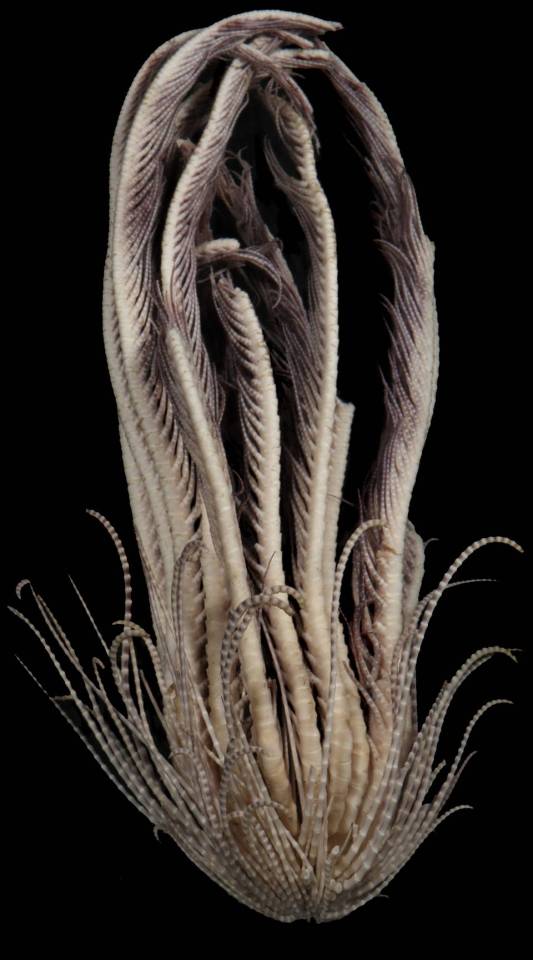
A preserved Promachocrinus fragarius, or Antarctic strawberry feather star, seen from the side. Photo from McLaughlin, Wilson and Rouse (2023)
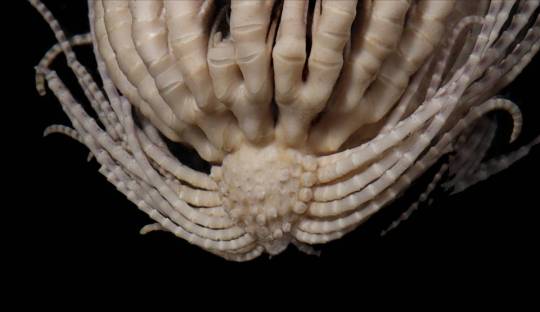
A close-up view of the central body of a Promachocrinus fragarius, or Antarctic strawberry feather star. Photo from McLaughlin, Wilson and Rouse (2023)
hey don't cry, ‘large’ creature with 20 arms found lurking in Antarctic sea, okay??
39K notes
·
View notes
Text
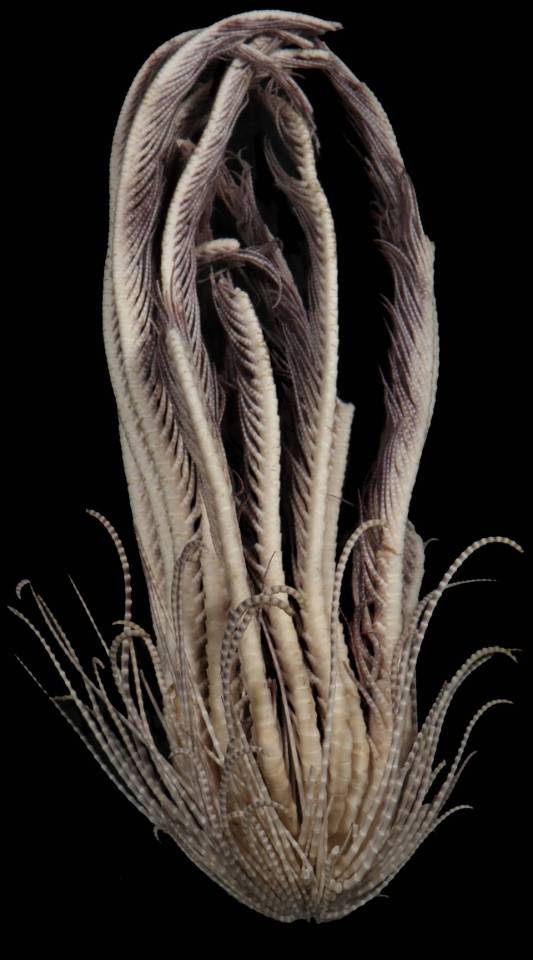
A preserved Promachocrinus fragarius, or Antarctic strawberry feather star, seen from the side. Photo from McLaughlin, Wilson and Rouse (2023)
hey don't cry, ‘large’ creature with 20 arms found lurking in Antarctic sea, okay??
39K notes
·
View notes